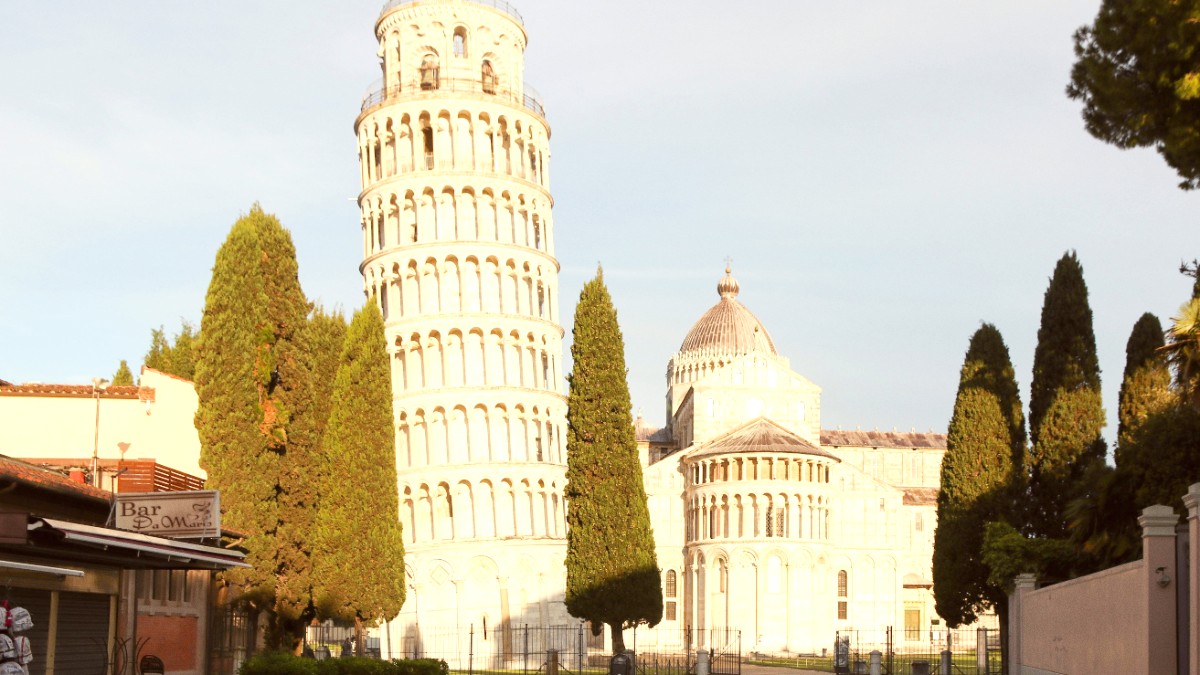
Tuscany, Italy
The Piazza dei Miracoli, an UNESCO World Heritage site, represents the core of Pisa's monumental heritage. It contains masterpieces that exemplify the unique Pisan Romanesque architectural style.
This expansive, green lawn contains Pisa's most famous monuments. The name "Square of Miracles" captures the awe-inspiring beauty of these structures.
The Piazza dei Cavalieri offers a grand city square feel, contrasting with the tourist focus of Piazza dei Miracoli.
Remnants of Pisa's medieval fortifications. Climb Torre Guelfa for panoramic city views, including the Leaning Tower from a different angle.
A small, exquisite Gothic church on the Arno bank. Known for its delicate, intricate facade and highly ornate exterior.
A small entry fee typically applies for climbing Torre Guelfa. Santa Maria della Spina is free to view from outside, interior access may have a small fee.
A combination ticket for Piazza dei Miracoli attractions includes access to most museums and offers better value.
These sites provide context to Pisa's powerful past as a city-state and showcase its beautiful religious architecture beyond the main square.
While mainly known for architectural wonders, Pisa also has serene natural spaces for relaxation and appreciation of local flora and fauna.
One of the oldest university botanical gardens globally (founded 1544). It contains a diverse collection of plants, peaceful pathways, and historic greenhouses.
An arboretum provides a calm respite from the city's bustle. It has a small entry fee.
Associated with the University of Pisa, it represents a long history of botanical study.
A large natural park west of Pisa towards the coast. It includes pine forests, coastal dunes, wetlands, and Lake Massaciuccoli.
Opportunities for walking, cycling, and birdwatching. Lake Massaciuccoli is known as the setting for Puccini's operas.
Access to some park areas may be restricted or require guided tours to protect wildlife. Fees vary by activity.
A mural by Keith Haring, one of his last public works, located on the side of the Church of Sant'Antonio Abate near Pisa Centrale. It displays 30 dynamic, interlocking figures symbolizing peace and harmony.
The main shopping street, connecting Piazza Vittorio Emanuele II to the Arno River. It offers a lively atmosphere with Italian and international fashion brands and local shops. Good for people-watching.
Sections of Pisa's well-preserved medieval walls are accessible for walking. This provides unique perspectives of the city and its monuments from above, including the Leaning Tower.
Do not let the Leaning Tower be your only stop. Explore Pisa's quieter streets, cross the Arno, and discover its museums and hidden corners to gain a fuller appreciation of this historic city.
Use online resources to check opening hours and any temporary closures before your visit.
For the Leaning Tower, timed entry tickets are a must. Booking well in advance, especially during peak seasons, secures your desired time slot.
Combine visits to the Piazza dei Miracoli complex to see the Cathedral, Baptistery, and Camposanto, as these are often included in a single ticket.
For attraction tickets and guided tours in Pisa and other Tuscan cities, GetYourGuide offers convenient online booking.
Wear comfortable shoes, as much of Pisa is best explored on foot.
Pisa extends beyond its famous tower. Many other historical and cultural sites await discovery. Immerse yourself in the city's academic and artistic vibrancy.
While the Duomo is celebrated, other churches in Pisa possess unique architectural styles and historical significance.
Pisa is an university city, home to historic and prestigious academic institutions that have shaped its intellectual landscape for centuries.
Pisa's museums offer a glimpse into its artistic evolution and historical narratives, from medieval to contemporary art.
These museums provide cultural context for the city's monumental sites.
Beyond the main tourist path, Pisa's streets reveal local life, unique shops, and unexpected delights.
Discover local daily life by venturing into the Oltrarno area south of the river.
Pisa also offers modern artistic expressions, contrasting its ancient history with contemporary works.
Pisa is a city best explored on foot. Comfortable footwear will make your exploration much more enjoyable.
Especially during warmer months, staying hydrated is important. Carry a reusable water bottle.
Verify opening hours and any special closures for museums and attractions before your visit.